With free printable potty chart at the forefront, embark on a journey of potty training success. Discover the benefits, customization options, and tips for tracking progress in this comprehensive guide.
Introduction to Free Printable Potty Chart

A potty chart is a visual tool used to track a child’s progress in potty training. It typically consists of a grid or chart with spaces for stickers or marks to be placed whenever the child successfully uses the potty.
The purpose of a potty chart is to provide a visual representation of the child’s achievements and to motivate and encourage them throughout the potty training process.Using a potty chart has several benefits for both parents and children. Firstly, it allows parents to track their child’s progress and see how far they have come in their potty training journey.
This can be especially helpful for parents who may feel unsure or overwhelmed about the process. The chart provides a sense of accomplishment and serves as a tangible reminder of the child’s achievements.For children, a potty chart can be a fun and engaging way to learn and practice using the potty.
The visual representation of their progress can boost their self-esteem and motivate them to continue their efforts. Additionally, the act of placing stickers or marks on the chart can provide a sense of reward and reinforcement for their successful potty moments.A
free printable potty chart is a valuable tool for parents as it offers convenience and accessibility. It can be easily downloaded and printed from various websites or online resources. This eliminates the need to purchase or create a physical chart, making it a cost-effective option.
Furthermore, printable charts often come in various designs and themes, allowing parents to choose one that suits their child’s interests and preferences.
Benefits of Using a Potty Chart for Potty Training
Using a potty chart for potty training offers several benefits for both parents and children. Here are some of the key advantages:
- Visual Representation: A potty chart provides a visual representation of a child’s progress, allowing them and their parents to see how far they have come in their potty training journey.
- Motivation and Encouragement: The chart serves as a source of motivation and encouragement for children, as they can see their achievements and feel a sense of accomplishment.
- Self-Esteem Boost: Seeing their progress on the chart can boost a child’s self-esteem and confidence, making them more eager to continue their potty training efforts.
- Tracking Progress: Parents can easily track their child’s progress and identify any patterns or areas that may need additional attention or support.
- Reward System: The act of placing stickers or marks on the chart acts as a reward system, providing positive reinforcement for successful potty moments.
- Customizability: Printable potty charts come in various designs and themes, allowing parents to choose one that aligns with their child’s interests and preferences.
Remember, the use of a potty chart should be combined with other potty training strategies and techniques to ensure a successful and positive experience for both parent and child.
How to Use a Free Printable Potty Chart
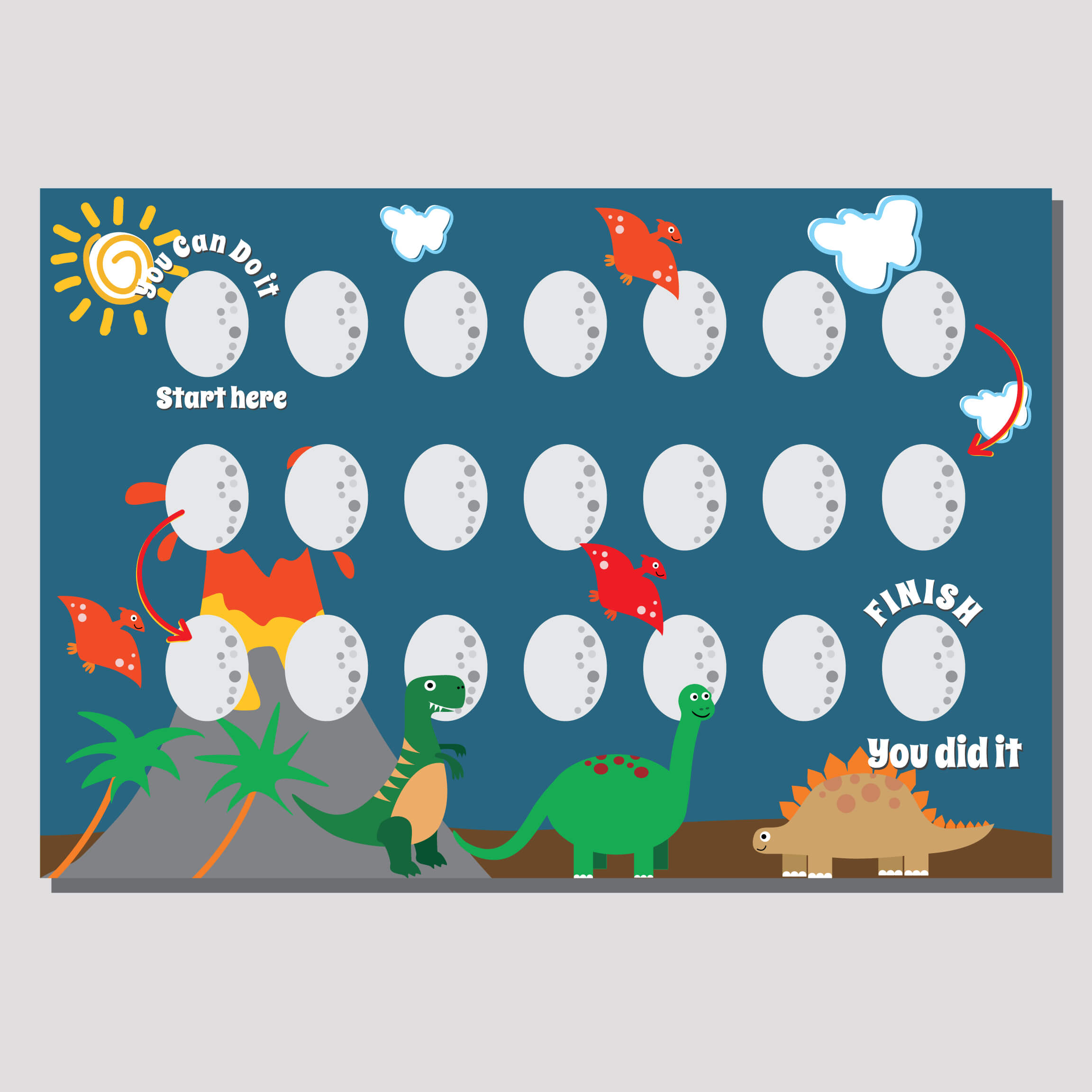
Using a free printable potty chart can be a helpful tool in potty training your child. Here are some step-by-step instructions on how to use a potty chart effectively.
If you’re looking for a body measurement chart printable, you’re in luck! We have just the thing for you. Check out this body measurement chart printable that you can easily download and use. It’s a great tool for keeping track of your body measurements and progress.
Whether you’re on a fitness journey or just want to have accurate measurements for clothing shopping, this printable chart will definitely come in handy. Simply click on the link and get ready to take control of your measurements!
Step 1: Print and Personalize
Start by finding a free printable potty chart that suits your child’s interests. There are numerous designs available online, ranging from superheroes to princesses. Once you have chosen a chart, print it out on a quality paper.
Tip: Laminate the chart or place it in a protective sleeve so it can be reused and withstand any accidents.
Next, personalize the chart by writing your child’s name at the top. This will make it feel more special and motivating for them to use it.
Step 2: Set Goals
Sit down with your child and explain how the potty chart works. Discuss the goals you want them to achieve, such as using the potty independently, staying dry throughout the day, or using the potty at specific times. Break these goals into smaller, achievable tasks that your child can work towards.
Step 3: Tracking Progress
Each time your child successfully completes a potty-related task, mark it on the chart using stickers, stamps, or simply coloring in the corresponding box. Encourage your child to actively participate in tracking their progress. This will give them a sense of ownership and pride in their achievements.
Tip: Use different colored stickers or stamps for different tasks to make it visually appealing and fun for your child.
Step 4: Rewarding Achievements
Create a system of rewards to motivate your child to reach their potty training goals. Decide on a reward that is meaningful to your child, such as a small toy, a special outing, or extra playtime. Set specific milestones for the rewards, such as completing a row or column on the chart, or achieving a certain number of successful potty trips.
Tip: Involve your child in the reward selection process to make it more exciting for them.
Step 5: Celebrate Success
When your child reaches a significant milestone or achieves their potty training goals, celebrate their success. Praise and encourage them for their hard work and progress. This positive reinforcement will motivate them to continue their potty training journey.Remember, every child is different, and potty training can take time.
Be patient, consistent, and supportive throughout the process. With the help of a free printable potty chart, tracking progress and rewarding achievements can make the potty training experience more enjoyable and successful for both you and your child.
Designing a Free Printable Potty Chart
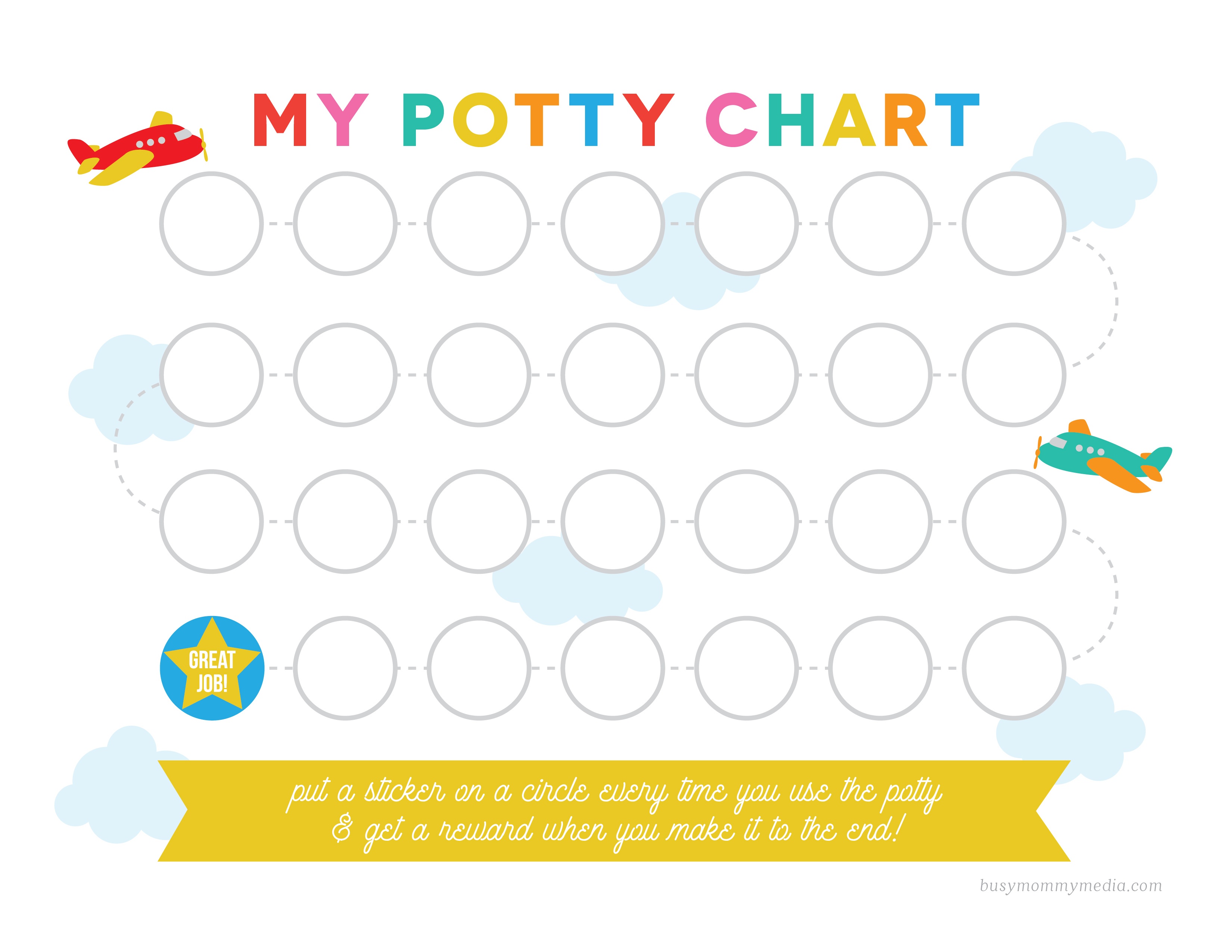
Creating a visually appealing potty chart is essential to engage and motivate children in their potty training journey. Here are some elements that can be included in a potty chart design:
Color Choices and Visual Appeal
Color plays a crucial role in capturing a child’s attention and making the potty chart visually appealing. Bright, vibrant colors like red, yellow, and blue are commonly used to create an attractive design. These colors not only stimulate a child’s senses but also add a sense of excitement and fun to the chart.
Additionally, using contrasting colors can help differentiate different sections or milestones on the chart.
Incorporating Child-Friendly Themes or Characters
Integrating child-friendly themes or characters into the design of a printable potty chart can make it more engaging and relatable for children. Popular themes such as animals, superheroes, princesses, or vehicles can be used to create a chart that resonates with the child’s interests.
Including their favorite characters or motifs can help motivate them to achieve their potty training goals.
- For example, a potty chart with a jungle theme could feature colorful illustrations of animals like lions, monkeys, and elephants.
- An underwater-themed chart could include images of fish, seashells, and mermaids.
- A superhero-themed chart could showcase different superhero symbols or masks.
By incorporating child-friendly themes or characters, the potty chart becomes a fun and interactive tool that children will be excited to use. It can help create a positive association with potty training and make the process more enjoyable for both the child and the parent.Remember,
the key is to design a potty chart that captures the child’s attention, motivates them to use the potty, and celebrates their progress. With a well-designed and visually appealing potty chart, potty training can become a more engaging and successful experience for everyone involved.
Printable Potty Chart Templates
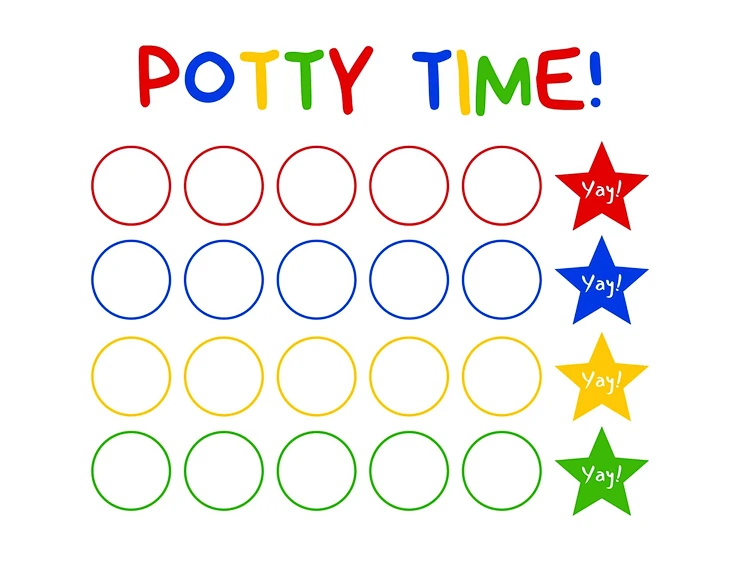
When it comes to potty training, using a potty chart can be a great way to keep track of your child’s progress and provide them with positive reinforcement. Thankfully, there are many websites and resources available where parents can find free printable potty chart templates.
Planning a cruise and want to add a personal touch to your cabin door? Look no further! We have a collection of free printable cruise door decorations that will make your door stand out from the rest. From cute and colorful designs to elegant and sophisticated styles, there’s something for everyone.
Simply visit free printable cruise door decorations to browse through the options and choose your favorite. Printing and decorating your door has never been easier!
Here are a few options to consider:
Websites and Resources
- 1. FreePrintableBehaviorCharts.com : This website offers a variety of printable behavior charts, including potty charts. They have different designs and themes to choose from.
- 2. RewardCharts4Kids.com : This website provides a collection of free printable reward charts, including potty charts. They have weekly and monthly options.
- 3. PottyTrainingConcepts.com : This website offers free printable potty training charts, as well as other potty training resources and tips.
Types of Templates
There are different types of potty chart templates available to cater to your child’s needs and preferences. Some common types include:
- 1. Weekly Charts: These charts track your child’s progress on a weekly basis, allowing them to earn rewards for each successful potty trip.
- 2. Monthly Charts: Similar to weekly charts, but with a longer time frame. They provide a visual representation of your child’s progress over the course of a month.
- 3. Themed Charts: Themed charts can be a fun and engaging way to motivate your child. They come in various themes such as animals, superheroes, princesses, and more.
Tips for Selecting the Right Template
Choosing the right potty chart template is important to ensure it suits your child’s age and preferences. Here are some tips to consider:
- 1. Age Appropriateness: Select a template that is suitable for your child’s age. Younger children may prefer charts with colorful and visually appealing designs, while older children may prefer more mature themes.
- 2. Personalization: Look for templates that allow you to personalize them with your child’s name or picture. This can make the chart feel more special and personalized for your child.
- 3. Motivating Rewards: Consider the rewards system associated with the template. Choose a template that offers rewards that will motivate and excite your child.
- 4. Visual Appeal: Choose a template that your child finds visually appealing. This will make them more likely to engage with the chart and feel excited about using it.
Tracking Progress on a Free Printable Potty Chart
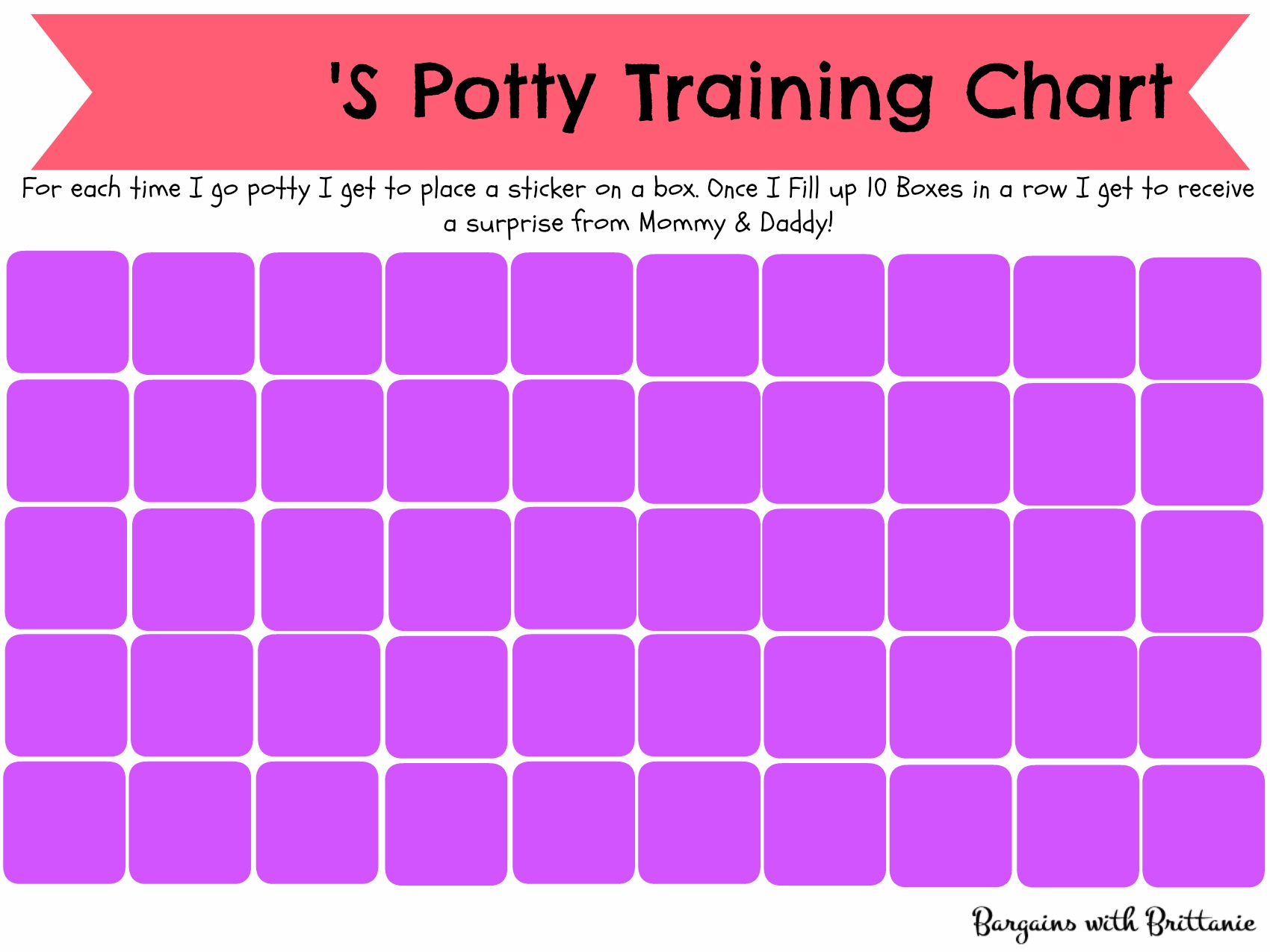
Consistent tracking and monitoring on a potty chart is essential for the success of potty training. By keeping track of a child’s progress, parents and caregivers can identify patterns, celebrate milestones, and provide positive reinforcement. It also helps in identifying areas that may need additional attention or support.
The Importance of Consistent Tracking and Monitoring
Consistent tracking and monitoring on a potty chart is crucial because:
- It allows parents and caregivers to see the overall progress of the child’s potty training journey.
- It helps in identifying any challenges or setbacks the child may be facing.
- It provides a visual representation of the child’s achievements, which can boost their confidence and motivation.
- It allows parents and caregivers to adjust their approach or strategies based on the child’s progress.
- It creates a sense of accountability for both the child and the parent or caregiver.
Strategies for Effectively Marking Progress
Here are some strategies to effectively mark progress on a potty chart:
- Use stickers or symbols to represent successful potty attempts. For example, a star, smiley face, or checkmark can be placed on the chart for each successful trip to the potty.
- Encourage the child to actively participate in marking their progress. They can place the sticker or symbol on the chart themselves, which can increase their sense of ownership and pride.
- Establish clear guidelines for earning rewards or incentives. For instance, the child may receive a small treat or privilege after a certain number of successful potty attempts.
- Consider using different colors or shapes for different types of potty-related milestones. For example, a green sticker can represent successful urination, while a blue sticker can represent successful bowel movements.
- Regularly review and discuss the progress with the child. This can help them understand their achievements and motivate them to continue their efforts.
Examples of Symbols or Stickers for Tracking
There are various symbols or stickers that can be used for tracking progress on a potty chart. Some examples include:
- Stars
- Smiley faces
- Checkmarks
- Thumbs up
- Hearts
These symbols can be easily obtained from craft stores or online retailers, or they can be printed from printable sticker sheets. It’s important to choose symbols that are visually appealing to the child and hold significance for them.Remember, the key to successful potty training is patience, consistency, and positive reinforcement.
By effectively tracking and monitoring progress on a potty chart, parents and caregivers can support and encourage the child throughout their potty training journey.
Rewarding Achievements on a Free Printable Potty Chart
Potty training can be a challenging milestone for both parents and children. One effective way to encourage progress is by using a potty chart. These charts provide a visual representation of a child’s potty training journey and can be a great tool for motivation.
Rewards play a crucial role in the effectiveness of a potty chart as they provide positive reinforcement for desired behaviors.
Age-Appropriate Rewards based on the Child’s Interests
It is important to choose rewards that are age-appropriate and align with the child’s interests. Here are some ideas:
- Stickers: Stickers are a popular choice for potty training rewards. Children can place a sticker on their potty chart every time they successfully use the potty. They can also collect a certain number of stickers to earn a larger reward.
- Small toys: Consider giving small toys or trinkets as rewards for reaching specific milestones on the potty chart. These can be inexpensive items that the child finds exciting and motivating.
- Praise and encouragement: Sometimes, verbal praise and encouragement can be just as rewarding for a child as physical rewards. Make sure to acknowledge and celebrate their achievements with positive words and gestures.
- Special privileges: Offer special privileges as rewards, such as choosing a favorite activity, staying up a little later, or having a playdate with a friend. These privileges can serve as additional motivation for the child to reach their potty training goals.
- Charts and certificates: Apart from the potty chart itself, you can also create special charts or certificates to recognize and reward the child’s progress. These can be displayed in their room or in a prominent place to serve as a visual reminder of their accomplishments.
The Importance of Consistency and Positive Reinforcement
Consistency is key when using a potty chart and rewarding achievements. Here’s why:
- Consistency helps establish a routine and reinforces the desired behavior. By consistently using the potty chart and providing rewards, children understand that using the potty is expected and rewarded.
- Positive reinforcement strengthens the connection between the behavior and the reward. When a child receives a reward for using the potty, they are more likely to repeat the behavior in the future.
- Consistent and positive reinforcement creates a positive association with using the potty. This helps build confidence and motivation in the child, making the potty training process more enjoyable and successful.
Remember, every child is unique, and what works for one may not work for another. It’s important to tailor the rewards to suit your child’s interests and preferences. With consistent and positive reinforcement, along with the use of a free printable potty chart, you can help your child achieve potty training success.
Troubleshooting Common Challenges with Potty Training
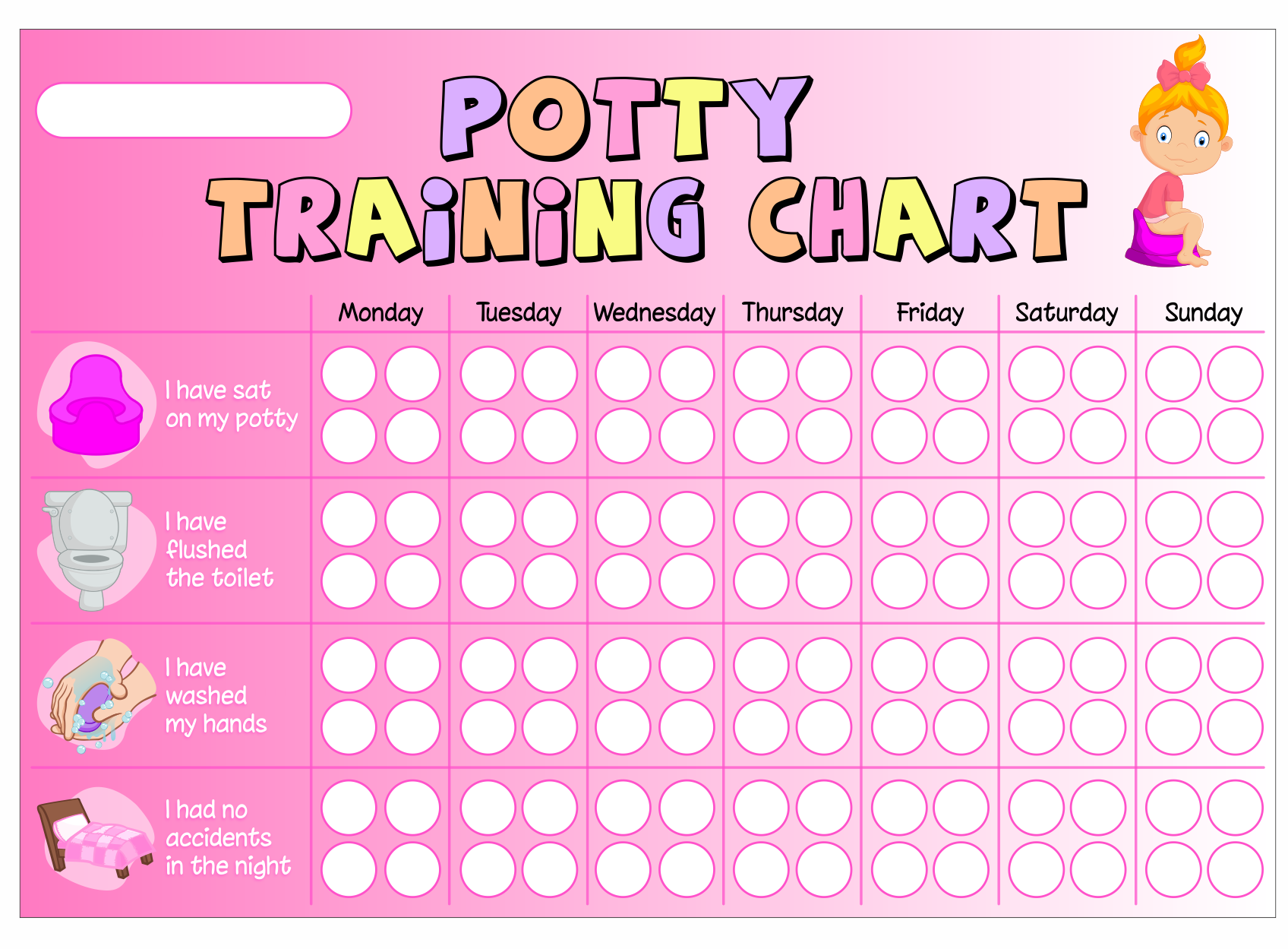
Potty training is an important milestone for children and parents alike. However, it is not always a smooth journey and can come with its fair share of challenges. Understanding these common challenges and having strategies to address them can help parents navigate through setbacks and maintain motivation throughout the potty training process.
Resistance to Using the Potty
Some children may resist using the potty for various reasons. It could be due to fear, discomfort, or simply not wanting to interrupt their playtime. Here are some strategies to address resistance:
- Stay calm and patient: It’s important not to force or pressure your child to use the potty. Stay calm and patient, and provide reassurance and support.
- Make it fun: Create a positive and engaging environment around potty training. Use colorful charts, stickers, or small rewards to make it more exciting for your child.
- Role modeling: Let your child observe and imitate older siblings or parents using the potty. This can help normalize the behavior and make them more comfortable with the idea.
- Involve your child: Give your child some control and autonomy in the process. Let them choose their own potty seat or underwear, and involve them in decision-making whenever possible.
Accidents and Setbacks, Free printable potty chart
Accidents are a normal part of the potty training process, and setbacks can occur even after significant progress. Here are some strategies to address accidents and setbacks:
- Stay calm and supportive: Accidents can be frustrating, but it’s important to stay calm and supportive. Avoid punishment or shaming, as it can create negative associations with using the potty.
- Revisit the basics: If accidents become frequent, it may be helpful to take a step back and reinforce the basics of potty training. Remind your child about using the potty regularly and provide gentle reminders.
- Establish a routine: Creating a consistent routine around potty breaks can help minimize accidents. Set specific times for your child to sit on the potty, such as after meals or before bedtime.
- Keep it positive: Focus on the progress your child has made rather than dwelling on setbacks. Celebrate small achievements and provide positive reinforcement to keep them motivated.
Maintaining Motivation and Perseverance
Potty training can be a lengthy process, and it’s important to maintain motivation and perseverance throughout. Here are some tips to help you stay motivated:
- Set realistic expectations: Understand that every child is different and will progress at their own pace. Set realistic expectations and avoid comparing your child’s progress to others.
- Celebrate small wins: Acknowledge and celebrate even the smallest achievements. This can help boost your child’s confidence and keep them motivated.
- Use incentives: Consider using a rewards system to motivate your child. This could be stickers, small treats, or special privileges for successfully using the potty.
- Seek support: Reach out to other parents or join potty training support groups to share experiences and get tips from others who have been through the process. Sometimes, just knowing that you’re not alone can provide the motivation you need.
Remember, each child is unique, and potty training may have its ups and downs. By understanding common challenges, having strategies to address setbacks, and maintaining motivation, you can help your child successfully navigate through the potty training journey.